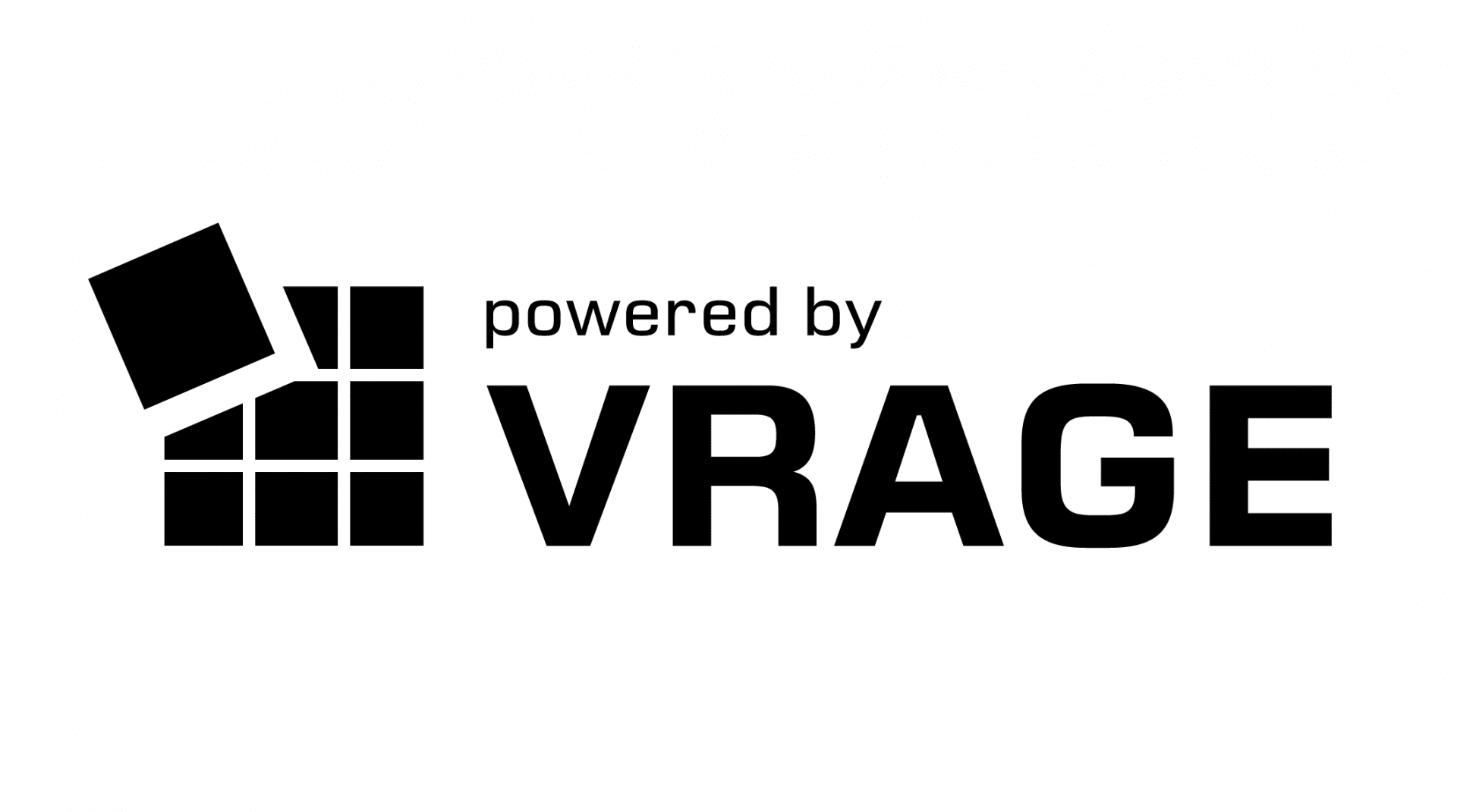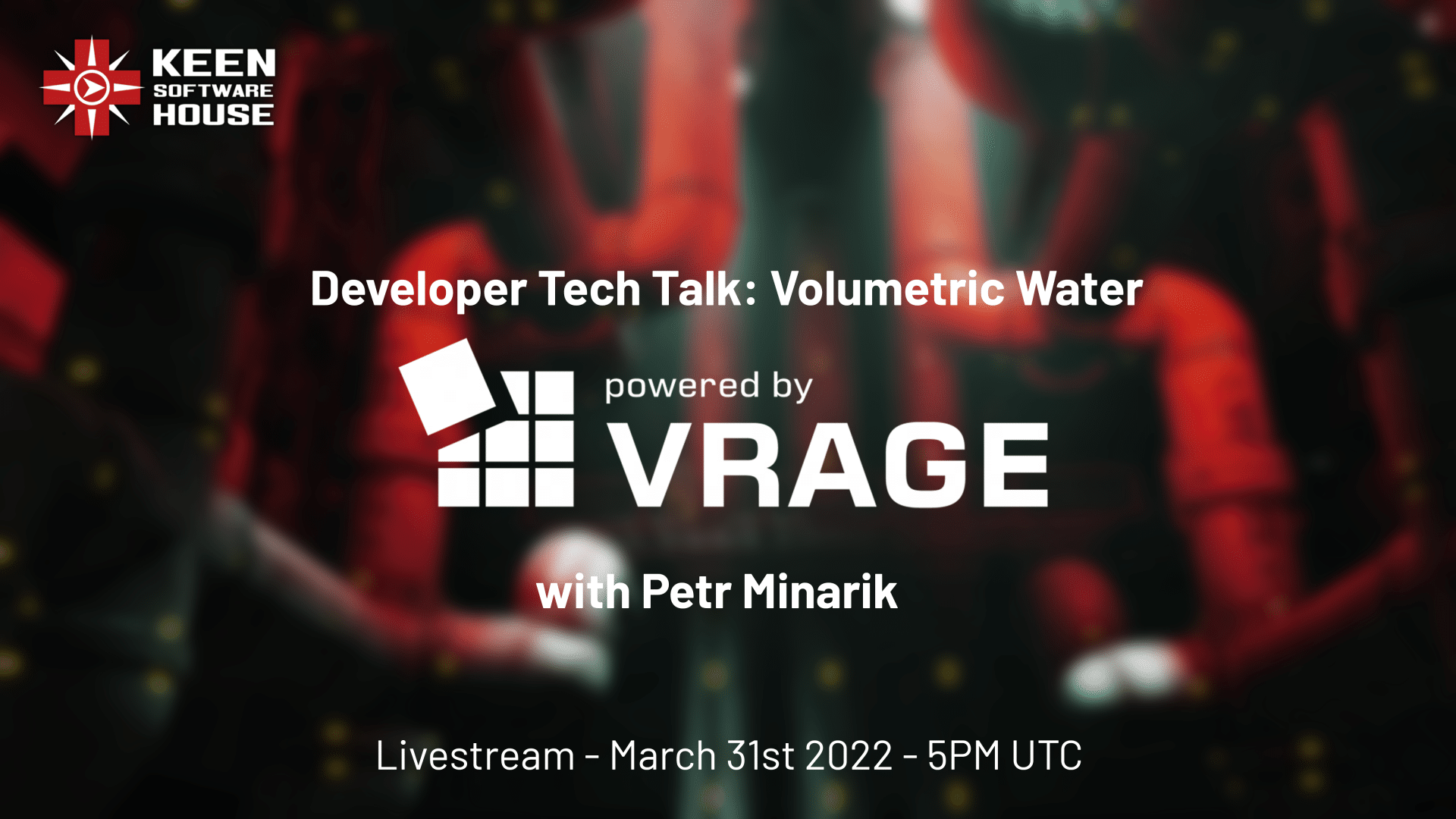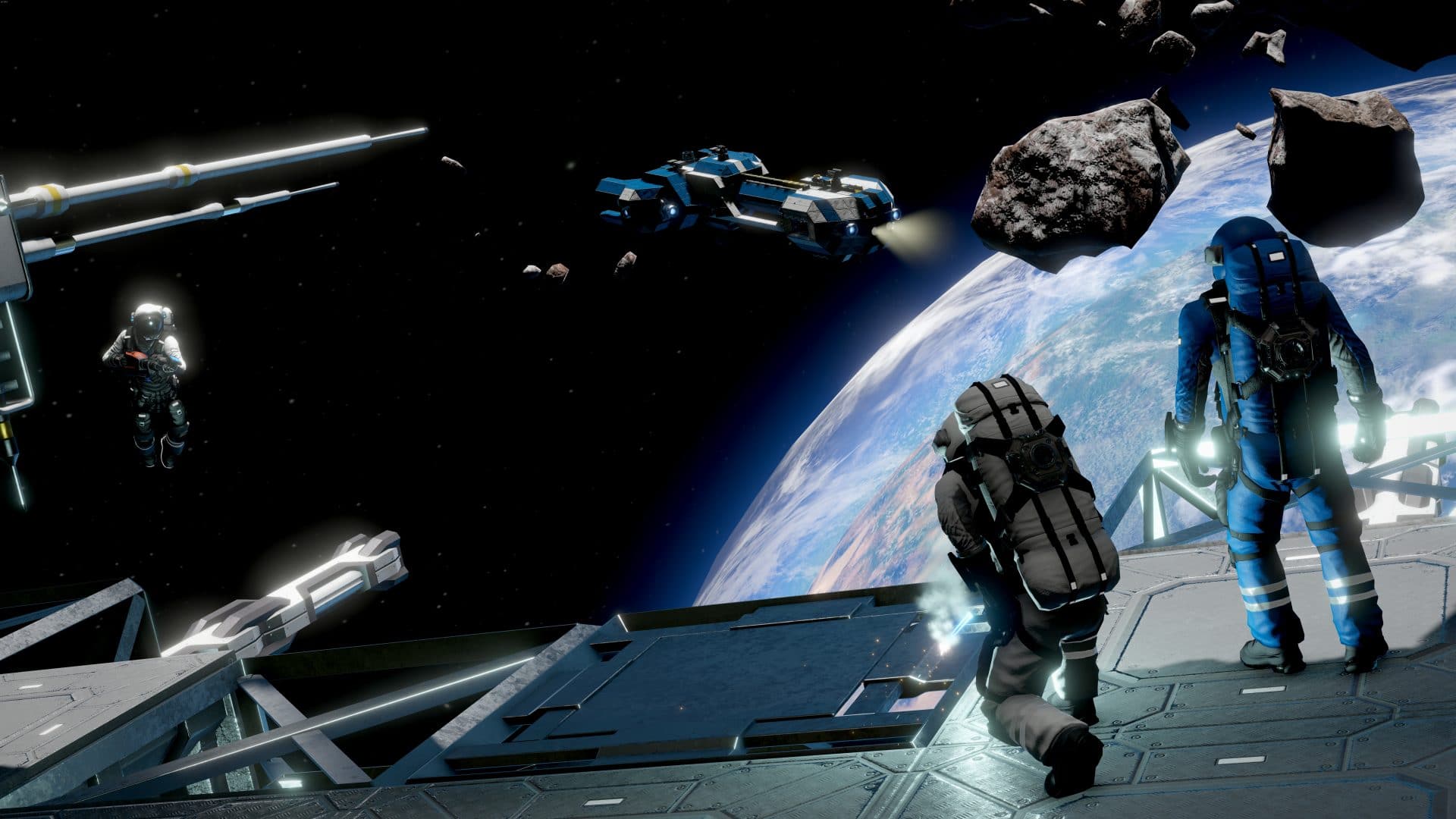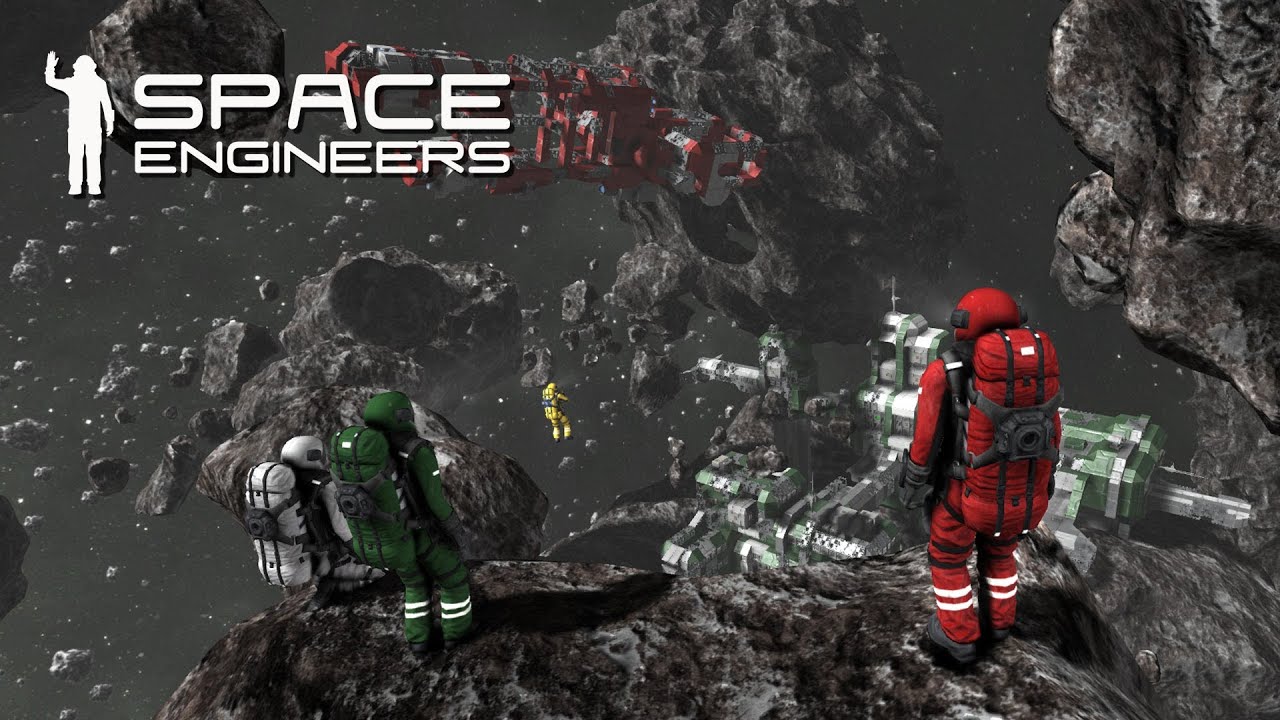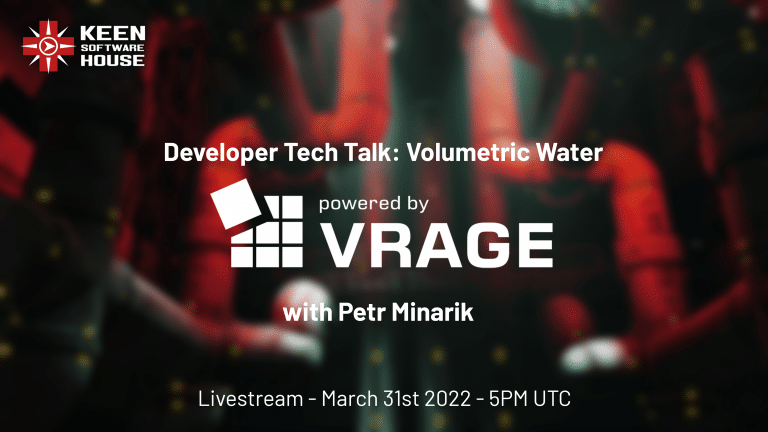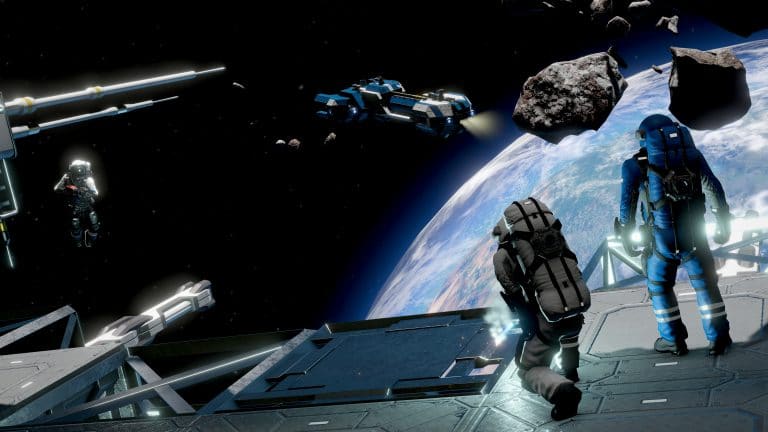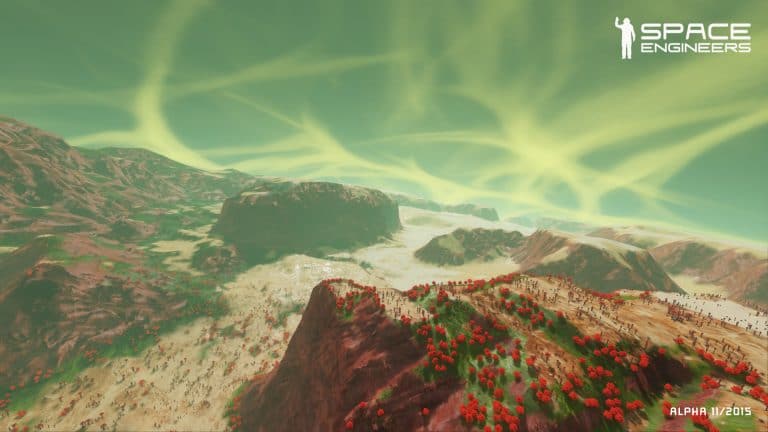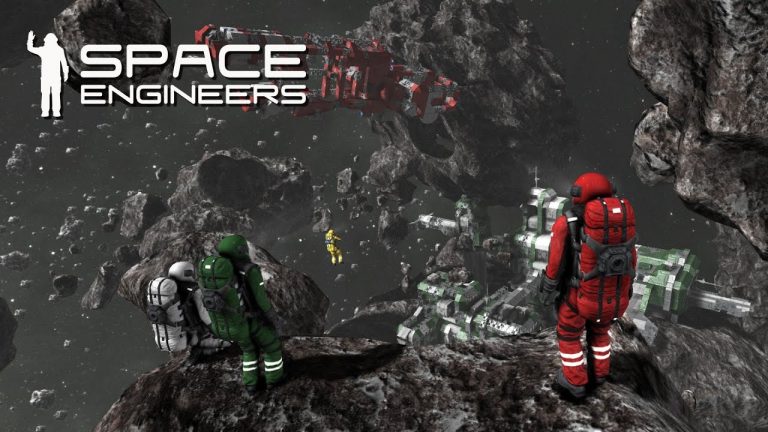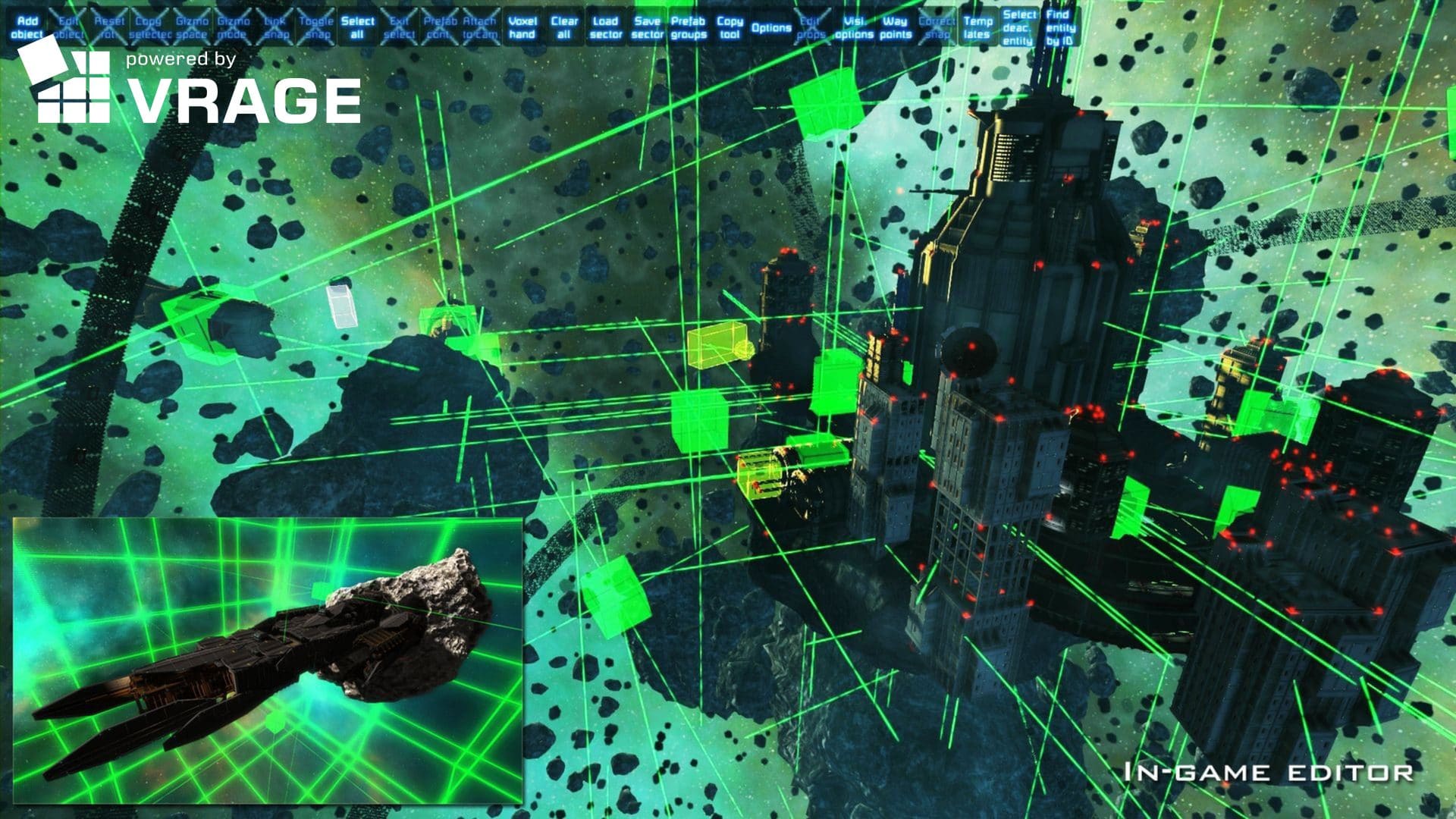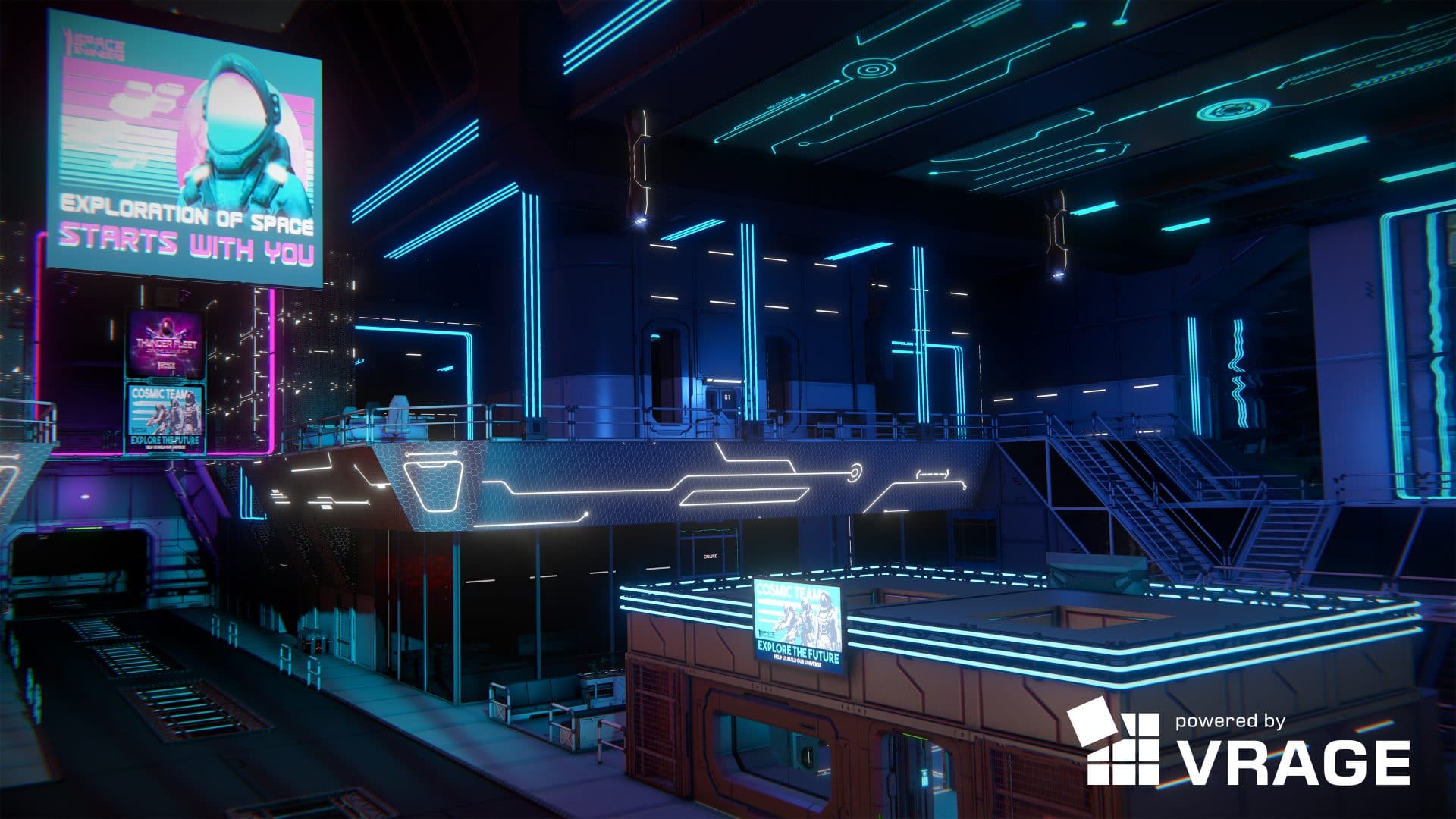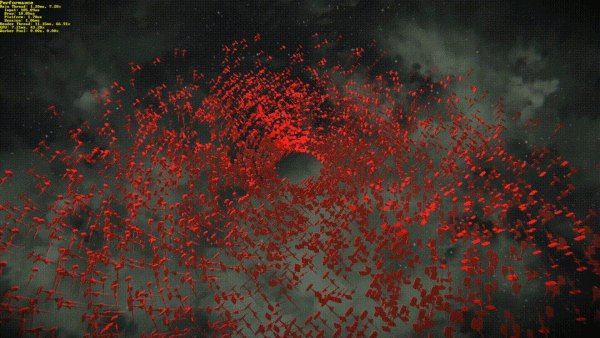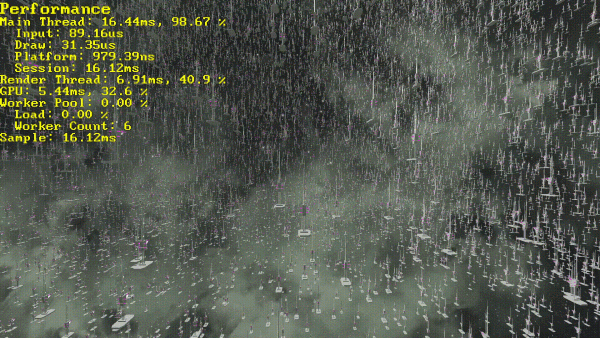VRAGE™ is an in-house game engine developed by Keen Software House. VRAGE stands for “volumetric rage” and/or “voxel rage”.
VRAGE’s core feature is volumetricity within the environment. Volumetric objects are structures composed from block-like modules interlocked in a grid.
Volumetric objects behave like real physical objects with mass, inertia and velocity. Individual modules have real volume and storage capacity and can be assembled, disassembled, deformed and destroyed.

